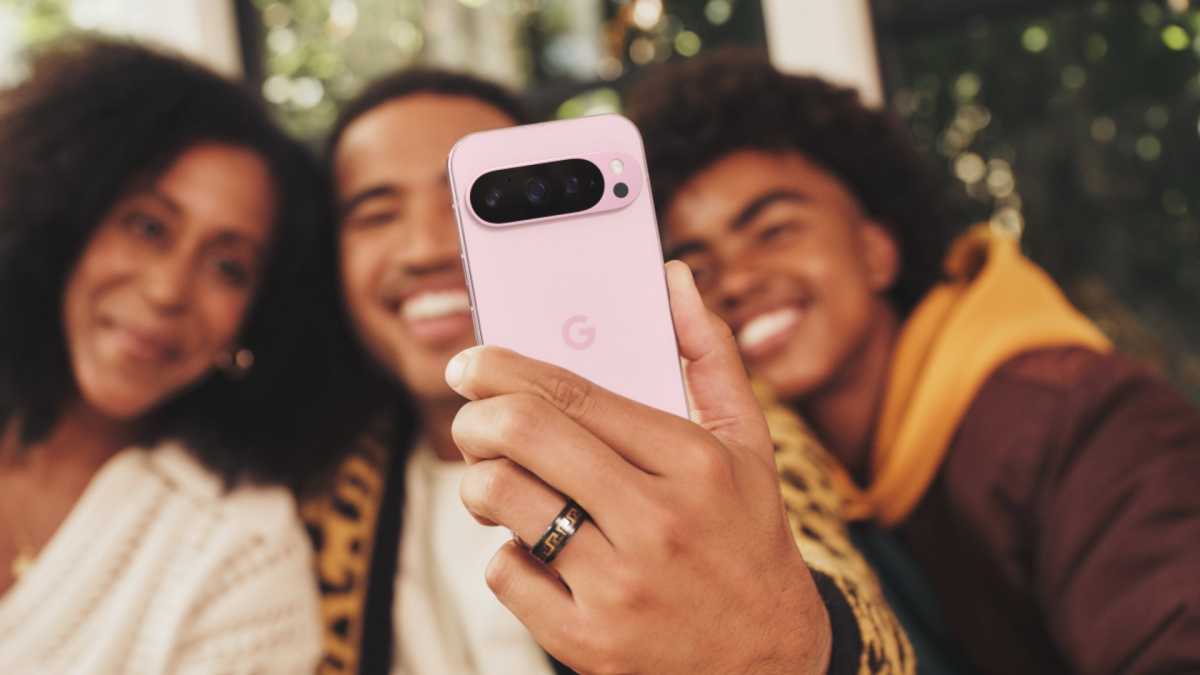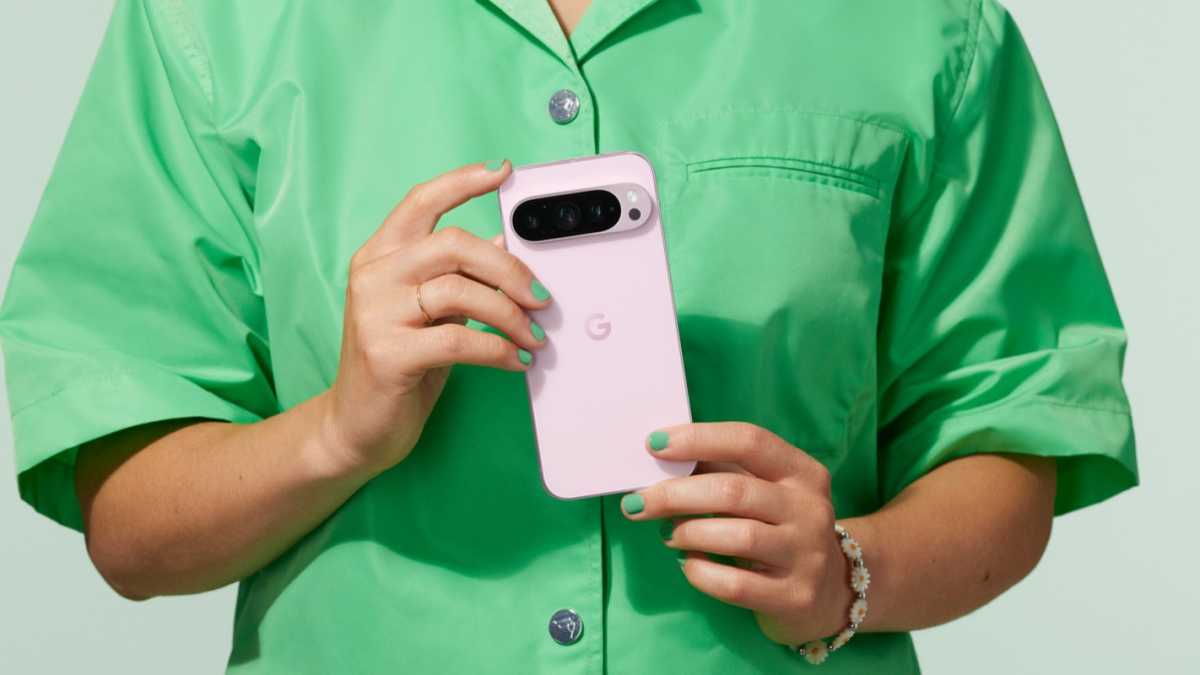Google has just unveiled its latest smartphones in the Pixel 9 series, but this time it got a little more crowded. In addition to the standard Pixel 9 and Pixel 9 Pro, Google also unveiled the Pixel 9 Pro XL version, as well as the foldable Pixel 9 Pro Fold.
One is the basic model, another folds, but what is the difference between the two Pro versions? Both offer a range of cutting-edge features, yet they differ in several key aspects that will help you decide which one to buy.
Below you’ll find a comparison of the Pixel 9 Pro and 9 Pro XL, so you’ll know which one is the best choice.
Design
Both phones look exactly the same, minus the fact that the Pro XL version is just bigger.
They feature a silky matt back with polished flat metal frame, a centred punch-hole cut-out for the selfie camera and slim bezels. On the rear, there’s still the familiar Pixel design with a camera bar, but now it doesn’t extend edge-to-edge, unlike the Pixel 8 and 8 Pro.
They both also feature Gorilla Glass Victus 2 on the front and back for added durability, plus an IP68 rating for dust and water resistance. They are available in Porcelain, Obsidian, Hazel and Rose Quartz finishes.
In terms of build, really the only difference is their size and weight. The Pixel 9 Pro measures 152.8 x 72.0 x 8.5mm, while the Pixel 9 Pro XL is 162.8 x 76.6 x 8.5mm. They weigh 199g and 221g respectively.
Display
The difference in size also means a difference in displays.
The Pixel 9 Pro has a 6.3-inch display with resolution of 1280 x 2856 at 495ppi. On the other hand, the Pixel 9 Pro XL boasts a 6.8-inch display with resolution of 1344 x 2992 at 486ppi.
However, both are Super Actua LTPO OLED screens with 20:9 aspect ratio, 1-120Hz refresh rate and go up to 2000 nits (HDR), and up to 3000 nits (peak brightness).
Performance
Under the hood, both the Pixel 9 Pro and Pixel 9 Pro XL are powered by Google’s new Tensor G4 chipset, which is built on Samsung’s Exynos platform. This processor promises significant improvements in speed, efficiency and AI capabilities.
It’s paired with 16GB of RAM and 128GB, 256GB, 512GB or 1TB of internal storage.

The Pixel 9 Pro XL, with its larger body, might have an edge in performance due to better heat dissipation, making it more suitable for intensive tasks like gaming or video editing. Meanwhile, the Pixel 9 Pro, despite its smaller size, should still deliver top-tier performance, ensuring smooth and efficient operation for everyday tasks and more demanding applications.
At this point, however, we don’t know what the actual tests will reveal. Look out for our full reviews soon.
Cameras
Both phones share the same camera setup, which includes a 50Mp Octa PD main camera, a 48Mp Quad PD ultrawide camera with autofocus and a 48Mp Quad PD telephoto lens with 5x optical zoom and Super Res (digital) Zoom up to 30x.

As with performance, we don’t currently know what quality of photos and videos these cameras take. However, given that they are exactly the same, there’ll most likely be no difference between the photos taken with these phones.
And with the Pixel 8 Pro still being one of the best camera phones you can buy, expect top-tier photography once again.
Battery & charging
While the Pixel 9 Pro has a smaller 4700mAh battery, the Pixel 9 Pro XL goes for a more capacious 5060mAh cell. For context, the Pixel 8 Pro has a 5050mAh battery.
Google claims you can expect 24+ hours of battery life, or up to 100 hours with ‘Extreme Battery Saver’ mode turned on.
According to the company, the Pixel 9 Pro can charge up to 55% in about 30 minutes. The Pixel 9 Pro XL, on the other hand, is said to achieve up to 70% in about 30 minutes.
This relies on a 45W wired charger that isn’t included in the box. Google doesn’t specify the wattage of Qi wireless or reverse wireless charging, but they’re likely to be much slower.
Software
Both the Pixel 9 Pro and Pixel 9 Pro XL launched with Android 14. However, both models will be among the first to receive updates, including the upcoming Android 15, and are also promised seven years of OS and security updates.

The Tensor G4 chip in both devices enhances AI features such as Magic Compose, text-to-image conversion, and advanced photo editing tools, ensuring that users can take full advantage of Google’s AI-driven capabilities.
So, there are no differences when it comes to software features.
Price & availability
The Pixel 9 Pro starts at £999/$999 for the 128GB storage version. There’s also a 256GB model at £1,099/$1,099, 512GB at £1,219/$1,219 and 1TB at £1,449/$1,449.
The Pixel 9 Pro XL costs £1,099/$1,099 for the 128GB storage version. There’s also a 256GB model at £1,199/$1,199, 512GB at £1,319/$1,319 and 1TB at £1,549/$1,549.
As you can see, the XL version is £100/$100 more expensive than the regular Pixel 9 Pro in any configuration.

Should you buy the Pixel 9 Pro or Pixel 9 Pro XL?
In truth, the only question you should ask yourself when choosing the Pixel 9 Pro or Pixel 9 Pro XL is whether you want a larger or more compact device.
The only differences between these phones are the size of the screen, battery capacity, charging speeds (as a result of the different battery sizes) and, above all, the price.
So, if money isn’t a major factor and you prefer larger phones, get the new Pixel 9 Pro XL. But if you value a more compact phone or just want to save a bit of cash, you won’t miss out on much with the regular Pixel 9 Pro.



